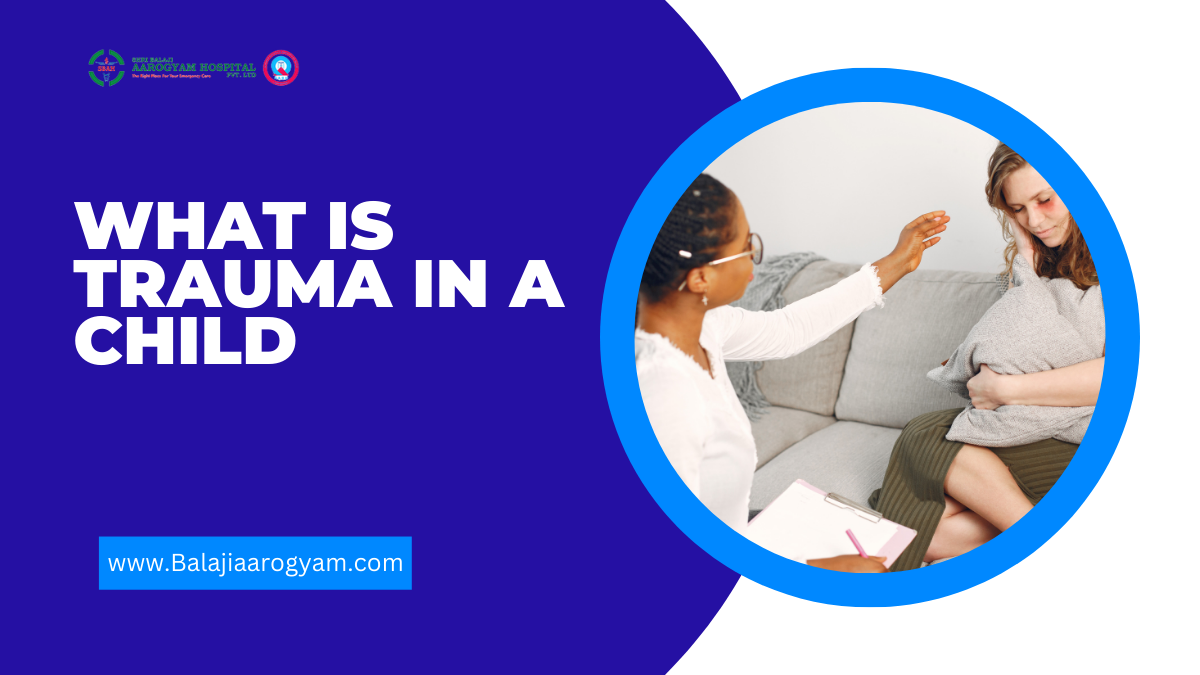What Is Trauma in a Child

Trauma is a distressing experience that overwhelms an individual's ability to cope. When a child experiences trauma, it can have significant impacts on their physical, emotional, and psychological well-being. Understanding what trauma is in a child is important for parents, caregivers, educators, and mental health professionals to recognize and respond appropriately. In this outline, we will discuss the types and causes of trauma in children, signs and symptoms of trauma, effects of trauma on children, treatment options, and prevention strategies. By gaining a better understanding of trauma in children, we can help support and promote healing and resilience in those who have experienced trauma.
Here are ten ways that explain how does trauma affect the brain of a child:
Importance of understanding trauma in children
Understanding trauma in children is crucial for several reasons:
-
Identification and early intervention: Recognizing the signs and symptoms of trauma in children is essential to providing early intervention and support. Early intervention can help prevent long-term negative consequences and promote healing.
-
Promotion of resilience: Understanding trauma in children helps to identify protective factors that promote resilience and healthy coping strategies. This can help mitigate the negative effects of trauma and promote healing and growth.
-
Empathy and support: Understanding trauma in children allows parents, caregivers, educators, and mental health professionals to offer empathy and support to children who have experienced trauma. This support can be crucial to their recovery.
-
Prevention: Understanding the causes and effects of trauma in children can help inform prevention strategies. By addressing the root causes of trauma and promoting protective factors, we can prevent traumatic experiences from occurring in the first place.
In summary, understanding trauma in children is essential for identifying and addressing trauma, promoting resilience, providing support and empathy, and preventing future traumatic experiences.
Types of Trauma
There are different types of trauma that can affect children. These include:
-
Acute trauma: This type of trauma is a single, unexpected event that causes intense fear, helplessness, or horror. Examples include natural disasters, car accidents, or physical or sexual assault.
-
Chronic trauma: Chronic trauma occurs when a child experiences repeated or prolonged exposure to stressful events. Examples include ongoing abuse, neglect, or domestic violence.
-
Complex trauma: Complex trauma is a combination of both acute and chronic trauma. It can occur when a child experiences multiple traumatic events, often over an extended period, that are often interpersonal in nature, such as abuse or neglect.
It is important to note that different types of trauma can have varying impacts on children and require different approaches to treatment and support.
Causes of Trauma
There are many different causes of trauma in children. Here are some examples:
-
Abuse: Physical, sexual, or emotional abuse can all be traumatic for children.
-
Neglect: When a child's basic needs, such as food, shelter, or medical care, are not met, it can be traumatic.
-
Domestic violence: Children who witness or are exposed to domestic violence can experience trauma.
-
Natural disasters: Events such as hurricanes, earthquakes, or wildfires can be traumatic for children who experience them.
-
Accidents: A serious or life-threatening accident can be traumatic for children, such as a car accident, severe injury, or sudden illness.
It is important to note that different children can have different responses to the same traumatic event, and some children may be more vulnerable to experiencing trauma than others. Additionally, children who experience ongoing or repeated traumatic events, such as chronic neglect or abuse, may be at higher risk of developing long-term trauma-related problems.
Effects of Trauma on Children
The effects of trauma on children can vary depending on the type of trauma experienced, the child's age and developmental stage, and the child's individual resilience and coping mechanisms. Here are some common effects of trauma on children:
-
Short-term effects: In the short term, a child who has experienced trauma may have physical symptoms such as headaches, stomachaches, or sleep disturbances. They may also display behavioral symptoms such as aggression, withdrawal, or changes in appetite. Emotionally, they may be anxious, fearful, or overwhelmed.
-
Long-term effects: If the trauma is not addressed, it can have long-term effects on a child's mental health and well-being. Children may experience ongoing anxiety, depression, or post-traumatic stress disorder (PTSD). They may struggle with relationships, have difficulty regulating their emotions, or struggle with substance abuse.
-
Effects on brain development: Trauma can also affect a child's brain development, particularly if the trauma occurs during critical periods of development. Trauma can impact a child's ability to learn, process emotions, and regulate behavior.
It is important to note that not all children who experience trauma will develop long-term problems, and many can recover with appropriate treatment and support. However, early identification and intervention are crucial to prevent long-term negative consequences.
Conclusion
Trauma in children is a distressing and overwhelming experience that can have significant impacts on their physical, emotional, and psychological well-being. Understanding what trauma is, the types and causes of trauma in children, and the effects of trauma is essential for identifying and responding to trauma in a timely and effective manner. It is important to provide support and empathy to children who have experienced trauma, promote resilience and healthy coping strategies, and prevent future traumatic experiences. Early intervention and appropriate treatment and support can help mitigate the negative effects of trauma and promote healing and growt
- Art
- Causes
- Crafts
- Dance
- Drinks
- Film
- Fitness
- Food
- Games
- Gardening
- Health
- Home
- Literature
- Music
- Networking
- Other
- Party
- Religion
- Shopping
- Sports
- Theater
- Wellness
- IT, Cloud, Software and Technology


